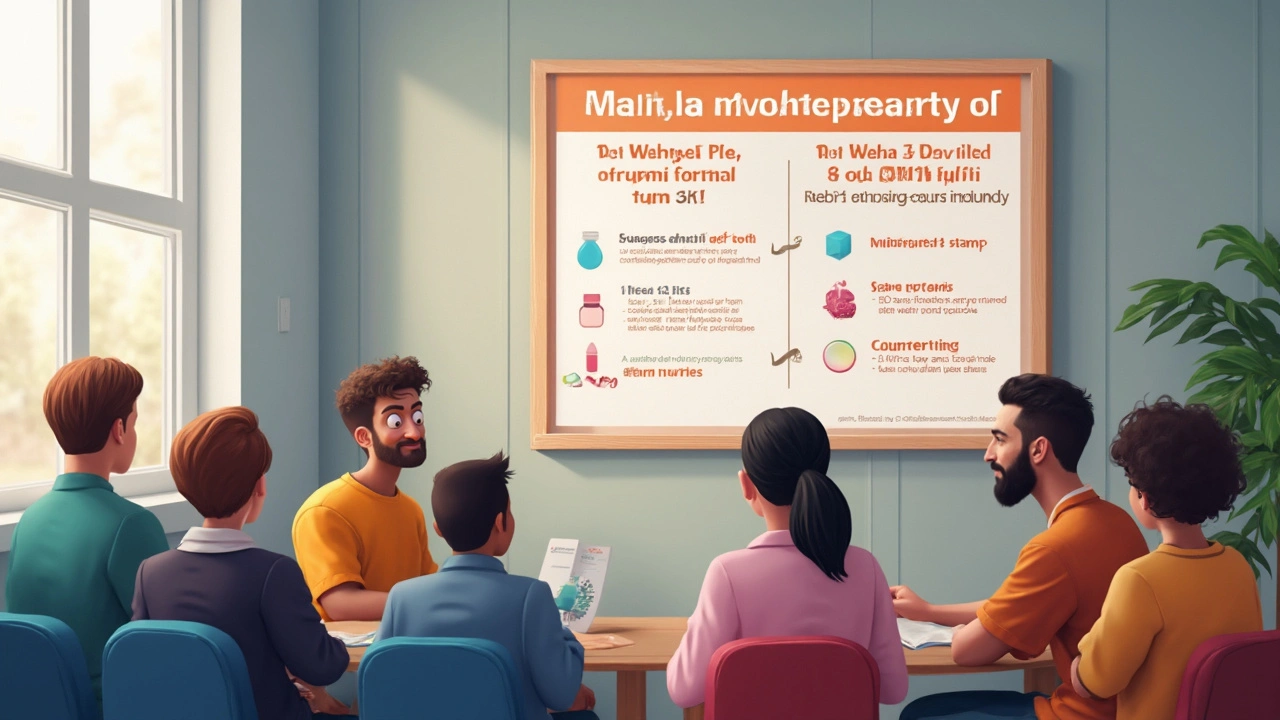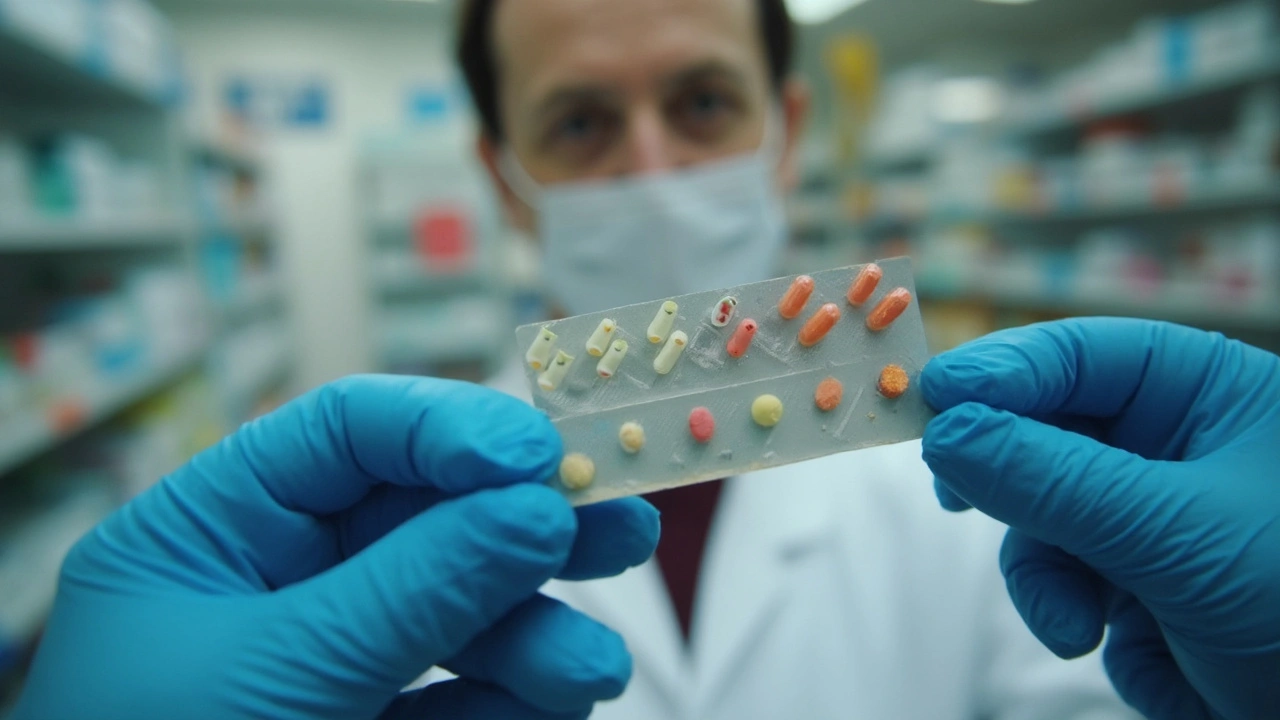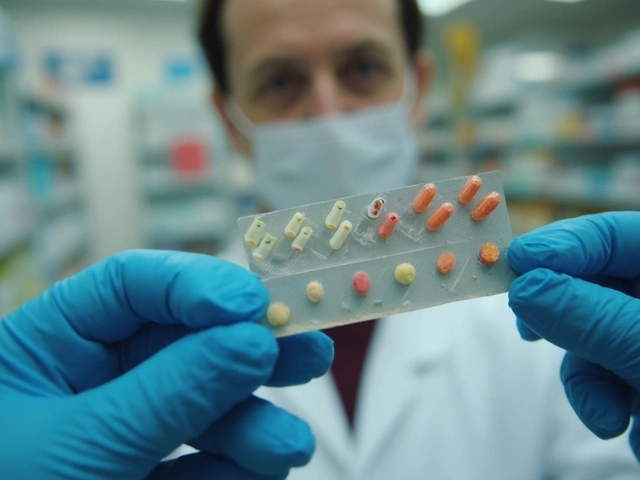Ever grabbed a bottle of antibiotics at the pharmacy, glanced at the label, and thought: "Is this the real thing?" With so many lookalike pills, it's easy to worry about what you're actually taking. There's a ton riding on this question, because getting stuck with a fake or low-quality antibiotic—what some call an “amoxicillin dupe”—can end up doing more harm than good. You might not kick the infection, or worse, face dangerous side effects. Cutting through the confusion is totally possible once you know what to check.
Understanding Generic Amoxicillin and What Makes It Legit
There’s a myth that generic drugs are somehow lower quality than their brand-name twins. The truth is much more reassuring: in the US, the FDA (Food and Drug Administration) requires every approved generic to prove it works exactly the same as the original. This means, if you’re handed a generic amoxicillin tablet, it’s supposed to have the same active ingredient, strength, safety, and effectiveness as its pricey cousin, Amoxil. What’s different? Sometimes the color, shape, or filler ingredients. But these can never affect how well the drug works—at least for FDA-approved products.
Ever looked closer and noticed that two tablets can look very different, but both supposedly contain amoxicillin? US law requires every prescription pill to be marked with a unique imprint—letters, numbers, or logos. The FDA keeps a searchable database for anyone to check these markings. Not in the US? Other countries’ regulatory agencies use similar systems, but not every off-brand pill floating around online fits the bill. In fact, a study in 2023 found that about 11% of antibiotic samples bought online failed basic identity or quality checks. That’s a pretty alarming number and a good reason to double-check the source.
People also panic about effectiveness. Some think generics “don’t work as well” as brands, but collections of studies, including a giant review from the Journal of the American Medical Association, show that FDA-approved generics for antibiotics cure infections at the same rate as brand-name drugs. The challenge is those fakes and unapproved lookalikes—they’re the real danger.

Spotting the Red Flags: Signs You're Dealing with a Fake or Unsafe Pill
How do you spot a risky “amoxicillin dupe” before you swallow it? Step one: Is the pharmacy or website reputable and licensed? If your pills came from an overseas source or a sketchy online shop, get skeptical. The World Health Organization reported in 2023 that up to 14% of medicines in low- and middle-income countries are substandard or outright fake. With “amoxicillin dupe” scams up, knowing what to check is vital.
Let’s look at some physical markers. Real FDA-approved pills always have:
- A clear imprint code or logo (easy to check in the FDA’s Pill Identifier database).
- Consistent size, shape, and color (if the same source).
- Clean tablet edges and no crumbling or powderiness.
- No weird odor—a telltale chemical or musty smell is a red flag.
Here’s a quick guide to safe sourcing:
- Stick with licensed US pharmacies (online ones should be “.pharmacy” accredited or listed on the FDA’s safe pharmacy site).
- Never trust a seller that skips the prescription requirement. That’s illegal and usually means lower standards.
- If buying abroad, research the country’s pharmaceutical controls—avoid places with a reputation for loose standards.
If you’re still not sure, there’s another trick: compare your pill’s imprint to the pill described on your prescription bottle and look it up in a database. If it matches, breathe easy. If it doesn’t match at all, do not take it. Bring it right back to the pharmacy and ask questions.
If you want to explore safe, effective options that might be less expensive but still high quality, check out this rundown of approved Amoxicillin dupe choices that tick all the right boxes for effectiveness and safety.
For those that love digging into the numbers, here’s what people most commonly see in fake vs. real amoxicillin pills, according to a credible lab survey from 2024:
| Feature | Genuine Generic | Fake/Unsafe Dupe |
|---|---|---|
| Tablet imprint code | Present and correct | Often missing or random |
| Packaging | Professional, sealed, with expiration date | No seal, blurry printing, no dates |
| Pharmacy label | Clear, matches prescription | Generic or missing |
| Color and shape | Uniform, standard | Varies, irregular |
| Smell | No unusual odor | Musty or chemical smell |

FDA Approval: Your Best Shield and How to Use It
The FDA stamp of approval is more than a technicality—it's your best protection. For a generic to be approved, companies have to prove in detailed lab tests that their version dissolves at the same rate, delivers the same amount to your bloodstream (“bioequivalence”), and has no dangerous impurities. Products that pass get a green light and a slot in the FDA’s Orange Book—a searchable online database open to anyone. Here’s the wild part: lots of non-US drugs claim to meet these standards but are never actually reviewed by the FDA. So, even if it looks “close enough,” if it’s not listed, it’s a gamble.
How do you quickly check if your generic amoxicillin is the real deal? Here’s a step-by-step:
- Take your prescription bottle.
- Type the pill’s imprint code into the FDA’s Pill Identifier search.
- Look up the generic company in the FDA’s Orange Book online.
- Ask your pharmacy to print out the drug’s FDA approval info—they’re required to give this if you ask.
Worried your pill is out-of-date or from a batch that’s been recalled? The FDA posts recall lists monthly on their site. Always check batch numbers if there’s noise in the news about tainted drugs (these headlines aren’t just for drama; they’re for your safety).
Why are recalls even a thing? Sometimes, even big companies slip up in manufacturing. In 2024, two major generics were yanked for “out-of-specification” testing, meaning tiny differences in how the drug dissolved or a bit more of some inactive ingredient than allowed. If you got your pills from a chain pharmacy, you’ll usually be notified automatically. Ordering from gray-market sources? Good luck—the tracking just isn’t there.
The bottom line is, more than 90% of antibiotics dispensed in the US are generics. When they’re FDA-approved, they’re as trustworthy as their brand-name equivalents. But all the lookalikes out there mean you can’t skip the steps—double-checking pill imprints, making sure the pharmacy’s legit, and checking batch info online are non-negotiable. Your health’s worth the few minutes it takes to confirm you’re not swallowing a fake. Especially with the rise of online shopping and global pill swapping, getting familiar with these quality markers can save you some major headaches, literally and figuratively.



Comments
When you peruse the pharmacy aisle, the sheer homogeneity of those little white discs can be almost... hypnotic. Yet the truth is far less glamorous: most FDA‑approved generics are chemically identical to their brand‑name cousins, the only variation being the inert filler that makes the pill hold together. The FDA demands bioequivalence, so you can trust the active ingredient – amoxicillin – to hit the same therapeutic threshold. Of course, the market is riddled with unscrupulous operators who slip counterfeit capsules into the supply chain, but those are the exception, not the rule. So, before you start spiralling into a paranoid frenzy, double‑check the imprint code and the licensing of the pharmacy. The difference between a legit script and a dud is often as trivial as a missing logo – and it’s definitely not worth a health scare. (typo: definatly)
It’s worth remembering that the regulatory landscape isn’t a monolith – many countries have their own robust verification systems. If you’re sourcing medication abroad, a quick glance at the local health authority’s database can save you a lot of hassle. The key is to stay calm, cross‑reference the imprint, and keep an eye on the packaging seals. A little due diligence goes a long way toward peace of mind.
For those who love a deep dive, the FDA’s Orange Book is an indispensable resource. It lists every approved generic, including the exact dissolution profile, which guarantees the drug releases the active compound at the intended rate. By entering the NDC number, you can confirm batch numbers, manufacturer credentials, and expiry dates, all of which are critical for ensuring therapeutic equivalence. Also, the Pill Identifier tool lets you match imprint codes to verified products in seconds, removing guesswork from the equation.
Let’s be clear: ignoring these checks is not just careless, it borders on negligence. The moral imperative is to demand transparency from any pharmacy, especially when health is at stake. If a seller can’t produce a verifiable imprint or batch info, you should walk away without hesitation.
Oh, you think it’s all sunshine and rainbows because the FDA signs a piece of paper? Think again. Every so often, a “trusted” outlet slips a batch that’s been compromised, and the fallout is nothing short of a public health nightmare. Those covert labs splatter cheap fillers into the mix, and the result is a sub‑therapeutic dose that fuels antibiotic resistance – a silent, insidious epidemic. The conspiratorial element isn’t a fringe notion; it’s a documented pattern that repeats across continents. So, next time you’re tempted to trust a discount site because the price looks “too good to be true,” remember that hidden agendas often masquerade as savings.
Just pop the imprint into the FDA Pill Identifier.
It’s absurd that anyone would even consider buying antibiotics from a sketchy corner of the internet – it’s practically a betrayal of national health values. The very idea of a “generic dupe” is nothing but a threat to the integrity of our healthcare system, and it should be condemned in the strongest possible terms.
We all want to keep the system safe, so let’s focus on sharing reliable resources and encouraging people to stick with accredited pharmacies. Together we can make a difference.
According to the latest FDA data, over 90 % of dispensed amoxicillin in the United States are generic formulations that have successfully met stringent bioequivalence criteria. This statistical evidence substantiates the claim that generics are therapeutically equivalent to brand‑name products.
Hey folks, just a friendly reminder: if you ever feel uneasy about your medication, take a moment to verify the imprint code on the pill. A quick search can confirm its legitimacy and give you peace of mind. It’s amazing how a few seconds of checking can prevent weeks of worry.
Honestly, most people don’t even bother with that simple step, which is why we keep seeing unnecessary complications. A little effort goes a long way, trust me.
🚀 Let’s get those pills verified, team! Grab your prescription bottle, punch the code into the FDA’s database, and celebrate the win when you see a green checkmark. You’ve just protected yourself from a potential fake – high five!
It’s a disgrace that some unscrupulous vendors think they can flout international standards and poison unsuspecting patients. This kind of scourge undercuts the very foundations of public health, and it must be called out loudly.
Absolutely, the best defense is informed vigilance: always source from licensed pharmacies, verify batch numbers, and report any suspicious products to the authorities. Knowledge is our strongest weapon against counterfeit meds.
One must question the motives behind the proliferation of low‑cost alternatives that lack proper oversight; the hidden agendas are evident upon close inspection.
I’ve been pondering how the global supply chain impacts drug authenticity. It seems that variations in regulatory rigor across borders can create loopholes that counterfeiters exploit. Perhaps a collaborative international database could streamline verification for consumers worldwide.
Sure, that sounds great, but let’s not forget that every new system brings its own bureaucracy and potential for misuse. Still, it’s worth a shot.
The FDA’s Pill Identifier is an invaluable tool that allows any consumer to confirm the authenticity of an amoxicillin tablet within seconds, and this functionality should be part of every patient’s routine. By entering the unique imprint code displayed on the tablet, the database returns a list of approved products, complete with manufacturer details, dosage strengths, and packaging specifications. This immediate verification eliminates the guesswork that often leads users to trust unverified sources, especially when purchasing medication online. Furthermore, the Orange Book provides a comprehensive listing of all FDA‑approved generic drugs, including their bioequivalence data, which assures that the generic version will dissolve and act in the body just as the brand name does. Accessing this information is straightforward: simply navigate to the FDA’s website, locate the Orange Book section, and search by the drug’s name or NDC number. In addition to checking imprint codes, users should inspect the physical characteristics of the pill, such as color uniformity, shape consistency, and the presence of a clear manufacturer logo. Any deviations, such as a fuzzy imprint or an unusual odor, can be red flags indicating a counterfeit product. It is also prudent to scrutinise the packaging for tamper‑evident seals, expiration dates, and clear labeling that matches the prescription. When in doubt, returning the medication to the pharmacy for verification is a safe practice that can prevent inadvertent consumption of substandard drugs. The FDA also maintains a regularly updated recall list, which users can consult using batch numbers to ensure their medication has not been withdrawn due to safety concerns. While the majority of generic amoxicillin on the market meets stringent quality standards, the presence of a small but significant percentage of falsified products underscores the necessity of due diligence. Knowledge of these safeguards empowers patients to protect themselves and contributes to broader public health efforts against antibiotic resistance. Finally, sharing these verification steps with friends and family can create a community of informed consumers who are less likely to fall prey to counterfeit medications.